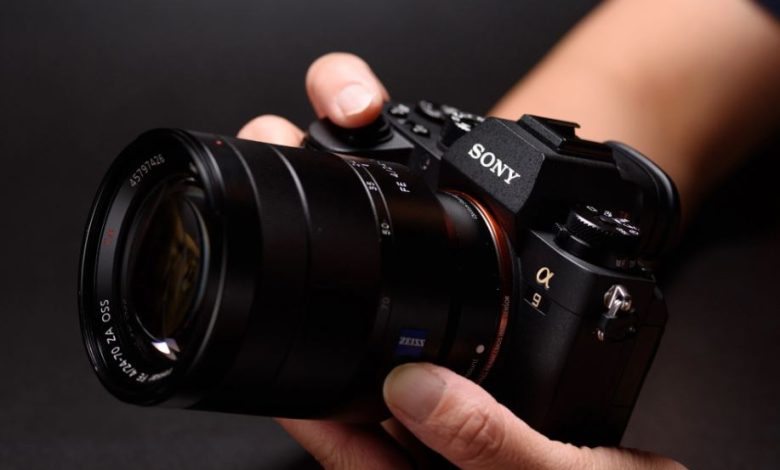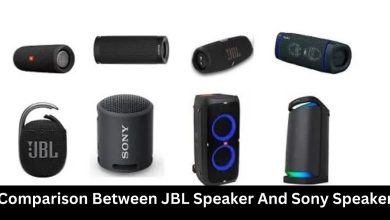5 Things To Consider When Choosing Mirrorless Camera

A mirrorless camera is a digital camera that does not use a mirror reflex optical viewfinder system. The term “mirrorless” indicates that the camera is without an optical reflex viewfinder, which is otherwise standard on DSLR cameras. Because of the absence of the mirror box, these cameras are also sometimes referred to as EVIL (Electronic Viewfinder interchangeable Lens) or MILC (Mirrorless Interchangeable Lens Camera) designs.
Mirrorless cameras have several advantages over DSLRs. First, they are smaller and lighter because they do not have the mirror box assembly. This makes them more portable, especially for travel photography. Second, mirrorless cameras have a shorter path from the lens to the image sensor, which means they can be designed with shorter and faster lens mountings.
This gives them an advantage in autofocus speed and performance. Third, because there is no need for a moving mirror, shutter vibration is reduced, resulting in less blur in images. Finally, many mirrorless cameras offer features that are not available on DSLRs, such as live view on the LCD screen and video recording.
The following are the things that you need to consider when choosing mirrorless camera:
-
Size and portability
Mirrorless cameras are quickly becoming the go-to choice for many photographers, thanks to their small size and portability. Unlike DSLRs, mirrorless cameras don’t have a bulky reflex mirror inside the body, making them much lighter and more compact. This makes them ideal for travel photography, as you can easily slip one into your backpack or carry-on luggage.
Moreover, they don’t have a mirror, mirrorless cameras are also quieter than DSLRs, which is helpful when you’re trying to shoot candid photos or videos. With all these advantages, it’s no wonder that mirrorless cameras are becoming increasingly popular with both amateur and professional photographers.
-
Lens selection
When selecting a lens for your Mirrorless Camera, it is important to keep in mind the purpose of the camera. If you are looking to take high-quality photographs, you will need a different lens than if you are using the camera for videography. High-quality lenses can be expensive, so it is important to select one that is within your budget.
In general, Mirrorless Cameras use interchangeable lenses, so you have the ability to change out the lens depending on your needs. This makes them a versatile option for photography and videography. With so many choices on the market, it can be overwhelming to try to select the right lens for your Mirrorless Camera. However, by keeping your purpose in mind and knowing your budget, you can narrow down the options and find the perfect lens for your needs.
-
Image quality
Mirrorless cameras are a type of digital camera that does not use a mirror or an optical viewfinder. Instead, they use an electronic viewfinder (EVF) or an LCD screen to allow the user to see what the sensor is seeing. This design gives mirrorless cameras several advantages over their DSLR counterparts.
For one, mirrorless cameras are typically smaller and lighter than DSLRs, making them more portable. Additionally, mirrorless cameras tend to have faster autofocus systems and can shoot at higher frame rates than DSLRs. However, the biggest advantage of mirrorless cameras is their image quality. Thanks to their large sensors and powerful image processors, mirrorless cameras are capable of capturing stunningly detailed images with beautiful colors and rich contrast. If you’re looking for the best image quality possible, a mirrorless camera is a way to go.
-
Functionality
A mirrorless camera is a type of digital camera that uses a lens and sensor to capture images. Unlike a DSLR, it does not have a reflex mirror or optical viewfinder. This makes mirrorless cameras smaller and lighter than DSLRs, as well as quieter because there is no mirror flipping sound. Mirrorless cameras have many of the same features as DSLRs, such as interchangeable lenses, manual controls, and the ability to shoot in RAW format.
However, they also have some unique advantages. For example, because the sensor is directly exposed to light, they can have larger sensors than DSLRs while still being compact. This allows for better low-light performance and improved image quality. In addition, mirrorless cameras are often faster than DSLRs because they lack the need to flip the mirror out of the way before taking a picture. As a result, mirrorless cameras are becoming increasingly popular with professional photographers who value both speed and quality.
-
Price point
A Mirrorless Camera typically costs less than a DSLR camera. If you are looking for a cheaper option, then a Mirrorless Camera is the way to go. However, it is important to keep in mind that cheaper does not always mean better.
With a Mirrorless Camera, you are sacrificing some features that you would get with a DSLR camera. For example, Mirrorless Cameras have smaller sensors which means that they do not perform as well in low light conditions.
So, when deciding on a camera, be sure to consider the price point and what features are most important to you. A Mirrorless Camera might be the perfect option for you if you are working with a tight budget.
-
Sensor size
A mirrorless camera is a digital camera that does not use a mirror or optical viewfinder system. The image sensor is exposed to light, which allows the photographer to see a live preview of the image. This type of camera is often lighter and smaller than a DSLR camera, because it does not need the complex optical viewfinder system.
One advantage of a mirrorless camera is that the sensor size can be larger, because there is no need for a mirror box. This results in better image quality, as more pixels can be used to capture the image. In addition, the lack of a mirror means that the shutter can be quieter, making it ideal for stealth photography or wildlife photography.
-
Image stabilization
When it comes to image stabilization of a Mirrorless Camera, there are a few key things to keep in mind. First, Mirrorless Cameras have sensors that are much smaller than those found in DSLR cameras. This means that they are more susceptible to camera shake, which can ruin a photo. Second, Mirrorless Cameras often have shorter lenses, which also makes them more vulnerable to camera shake. Finally, Mirrorless Cameras typically have a faster shutter speed than DSLR cameras. This means that they capture less light, making it more difficult to produce a sharp image. However, there are a few ways to combat these issues.




